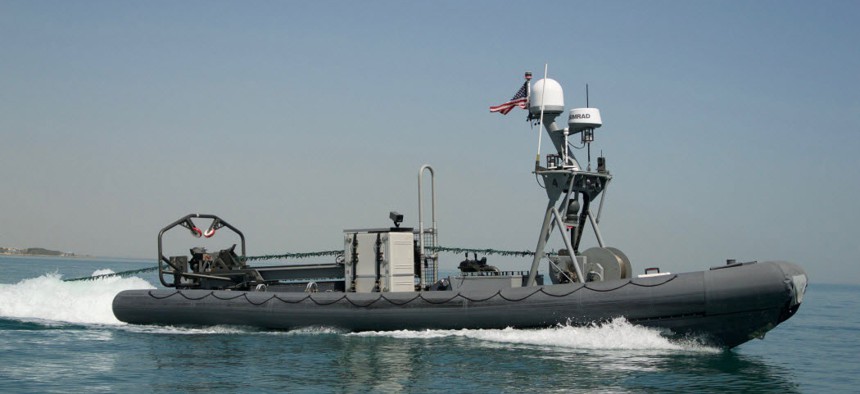ONR sets sail for first Unmanned Warrior exercise
Britain is hosting the inaugural event with NATO allies involving unmanned, autonomous surface, underwater and air vehicles.
The United States and Great Britain will combine two key features of future military operations—joint maneuvers and unmanned systems—next month in a first-of-its-kind exercise called Unmanned Warrior.
Hosted by the British Royal Navy, the exercise will involve more than 40 participants, including other allied navies, industry, academia and research labs, and will test 10 technologies relating to unmanned surface, underwater and aerial vehicles, according to a release by the Office of naval research, which is coordinating the U.S. participation.
The inaugural Unmanned Warrior will be part of the semi-annual Joint Warrior exercise, which Britain hold with the United States, NATO and other allies. “Unmanned Warrior provides a unique opportunity to showcase our technical and operational autonomous technologies, while simultaneously strengthening our international partnerships with all participating nations," Chief of Naval Research Rear Adm. Mat Winter said, adding that the Navy hopes the exercise will “push the limits” on unmanned, autonomous systems while improving interoperability among nations.
The exercise will involve unarmed systems but is designed to help plan the future or naval warfighting, ONR said. One of the benefits of unmanned and autonomous systems is that they can perform missions without putting personnel at risk.
The technologies tested in the exercise will follow five main themes:
Geospatial intelligence, with sensors on the unmanned systems gathering hydrographic data to define the ocean operating environment
Anti-submarine warfare, working to integrate the systems to improve threat detection and response.
Mine countermeasures, working integration among various vehicles—surface, underwater and air—to improve their effectiveness.
Intelligence, surveillance, targeting and reconnaissance, taking advantage of low-cost, multi-mission unmanned systems to deliver persistent and extended range ocean surveillance.
Command and control, working on how different types of unmanned vehicles can be used to enhance collaboration among manned and unmanned forces.




